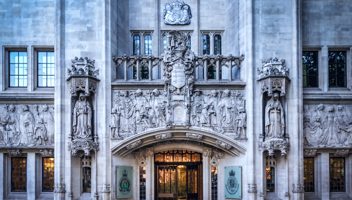Now the dust has settled on the announcement of changes to Agricultural Relief and Business Relief (commonly referred to as APR and BPR) that were announced in the Chancellor's Autumn Budget and that are to take effect from April 2026, where do agricultural businesses stand in making plans for future generations to come?
Involving all key parties
The first step in navigating these changes is understanding where you stand and having a solid grounding of what assets you own and their current value. You can find out more about auditing your current situation in our previous article here.
Once you have obtained your valuations and looked through the business structure(s) in place, whether that be partnership agreements, tenancy interests, limited company documents, or a mixture of all ownership structures, the next step is sitting down with your key advisors (lawyers, accountants, financial advisors etc.) and understanding what the position is for you and your family in light of these proposed changes. With change comes opportunity, and having a round table discussion with your trusted advisers will allow you to explore whether there are any potential planning opportunities that you may look at implementing to guard your family farm for generations to come.
Sitting down with your legal advisers is often seen as a daunting task by many and is frequently filed into the "I'll come back to that later" tray. However, having that meeting with your advisers at an early stage is more important than ever. Being proactive about taking steps to protect your assets is critical to reducing your ultimate exposure to Inheritance Tax (IHT) upon your death – there is a lot of value to protect for the next generation.
Attempt to reduce exposure
As the law presently stands, provided you meet the requirements to qualify for APR and BPR, generally assets will either qualify for 100% or 50% relief (with the rate of relief depending upon the type of asset it is), for an uncapped amount – meaning that as of today many have no exposure to IHT or a relatively low exposure given the value of assets being transferred on death.
However, under the proposed changes this is set to radically change so that only the first £1M of qualifying APR or BPR assets will attract 100% relief (or 50% relief if those assets do not qualify for the full 100% relief) and any qualifying assets in excess of the £1M cap will receive a reduced rate of relief set at 50%. This means that someone who potentially used to get 100% relief on all agricultural and business assets they owned could now be looking at 100% relief on only the first £1M of assets with anything above this potentially being subject to an effective rate of 20% IHT on death.
What is more, the £1M cap is not anticipated to be transferable. By way of example - if A dies and passes everything to their spouse (a transfer to a spouse is itself fully exempt from IHT), the surviving spouse would not be able to utilise A’s £1M allowance in addition to their own i.e. they would have a personal allowance of £1M only and not £2M.
Having the discussion with your advisers will allow you to understand what assets qualify for either APR and / or BPR and enable you to draw a clearer picture of what your current exposure to IHT will be and what planning measures may be put in place now to try and reduce or remove the potential exposure.
Finding the right solution
As is the way with IHT planning, there is no ‘one size fits all’ solution – each family has different dynamics and desires. However, sparking that conversation with your trusted advisers and exploring what solutions may assist you would prove beneficial. All transfers of nil value (i.e. gifts) trigger the 7-year clock for IHT purposes (and may confer a benefit in as soon as 3 years depending upon the value transferred), so the sooner the cogs start turning, the better.
It may be that passing part of the business down to the next generation may be an option, or that some assets presently qualify for no relief, and you may potentially make some simple changes to allow those assets to qualify for a relief.
If you do not have a will, or it has not been reviewed in some time, making sure you have one in place that does what you want it to do could also be critical here. If both spouses each own an interest in the business, it is important to ensure appropriate provisions are in place in your will to ensure that the first £1M of assets is not lost by passing everything to the surviving spouse (an exempt beneficiary).
Our private client and rural business teams are experienced in helping rural businesses to achieve their goals - we understand that keeping the family farm in the family for generations to come is often of primary importance. Please get in touch if you want to discuss anything raised in this insight or for further information to help you plan for the future.
Written by
Related News, Insights & Events

Managing family life: Legal, financial and emotional perspectives
22/05/2025
While we can’t predict what lies around the corner, we can take steps to protect what’s important and manage both personal and professional risk.

How to navigate the new IHT changes for agricultural businesses: Taking stock and seizing opportunities six months on from the Autumn Budget
Where do agricultural businesses stand in making plans for future generations to come?

Knowing where you stand is key for agricultural businesses navigating IHT changes
The inheritance tax (IHT) changes scheduled to be introduced in April 2026 are far reaching and of concern to all business owners, but none more so than those in the agricultural industry.





